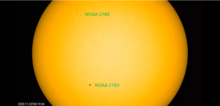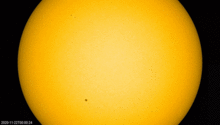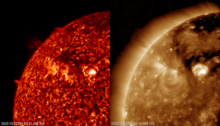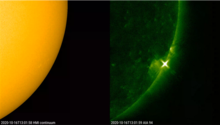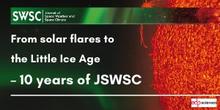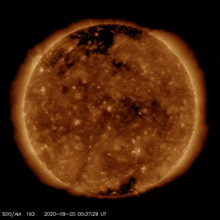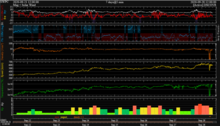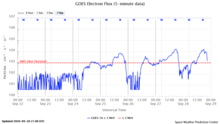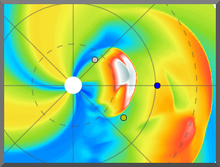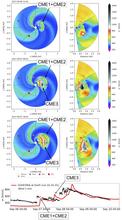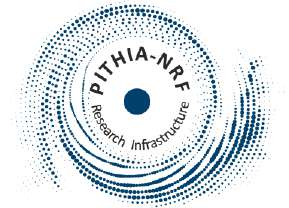news
Submitted on 2020-11-23
Two active regions are rotating over the southeast solar limb, and the second group contains a really big sunspot.
Submitted on 2020-11-17
On 11 November, a fairly simple sunspot region produced a long duration C-class flare. This was already the third sunspot region observed in November, and an indication that the new solar cycle 25 (SC25) is quickly gaining in strength.
Submitted on 2020-11-10
NOAA 2781 has become the largest sunspot group so far this solar cycle. It produced numerous C-class flares and drove the solar radio flux to its highest levels this year.
Submitted on 2020-11-03
Last week, solar observers were treated on no less than 2 relatively complex sunspot regions. Each group produced a number of C-class flares before starting a gradual decay.
Submitted on 2020-10-27
A relatively large and complex prominence eruption took place at the Sun's northeast limb on 23 October. The associated CME does not seem to have an earth-directed component.
Submitted on 2020-10-20
Two C-class flares occurred near the southwest solar limb on 16 October. Though small, they showed some interesting features, and the associated radio disturbances were also observed by the radioastronomy station in Humain.
Submitted on 2020-10-12
The Journal of Space Weather and Space Climate (JSWSC) is celebrating its 10th anniversary as an open access scientific journal.
Submitted on 2020-10-05
As we transit through the ongoing solar cycle minimum, the cosmic rays counts are at or very near their maximum value posing elevated technological and radiation risks to satellites and aviation.
Submitted on 2020-09-29
Geomagnetic activity reached moderate storming conditions on 27 September. This is the strongest geomagnetic storm of 2020 so far. Aside aurora at high latitudes, the number of energetic electrons increased to high levels and depressions in HF radio frequencies above Europe has been observed.
Submitted on 2020-09-25
EUHFORIA 2.0 is an extremely ambitious project to model the space around the sun and in which the earth floats. Camilla was there from the start and brings us her story.
Pages
Zircon - This is a contributing Drupal Theme
Design by
WeebPal.


